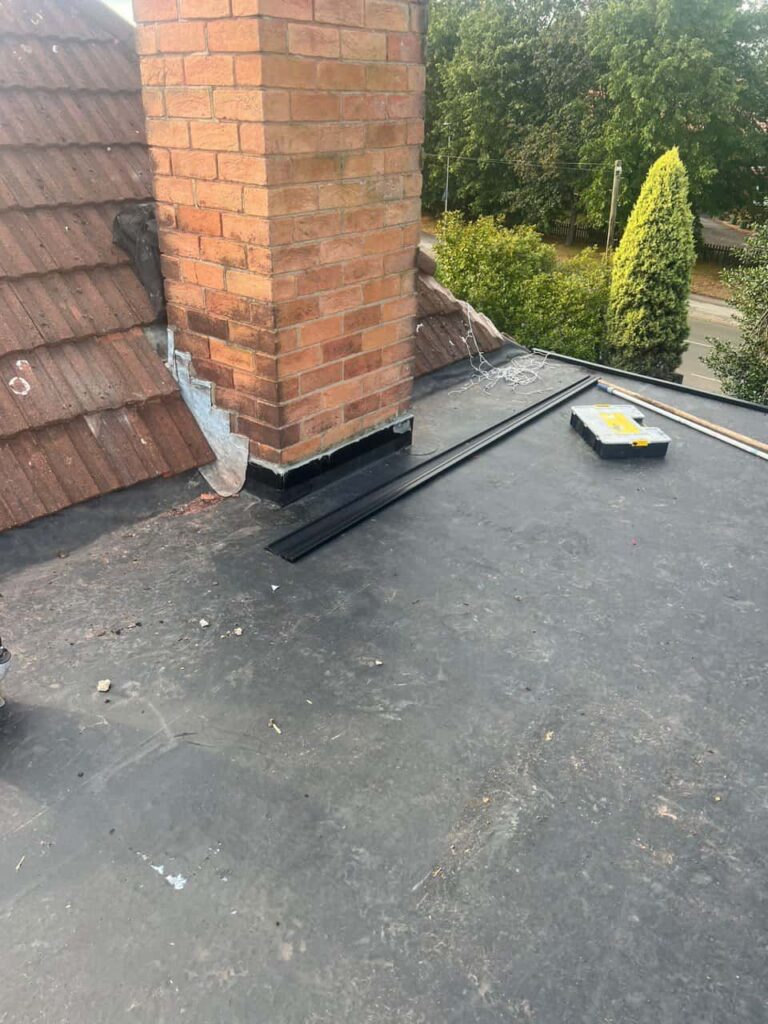A roof is one of the most critical elements of any building, offering protection from the elements and ensuring the integrity of your home or business. However, even a seemingly small issue, such as a slipped tile, can have a significant impact on your roof’s performance. In this blog post, we will explore why slipped tiles should never be ignored and how addressing this problem early can help you avoid costly repairs in the future.
At Midhurst Roofing Repairs, we specialise in diagnosing and repairing roofing problems, including slipped tiles, in Midhurst, West Sussex. Read on to find out why it’s essential to address slipped tiles promptly and how it could save you time and money in the long run.
What Are Slipped Roof Tiles?
Slipped tiles occur when one or more roof tiles move out of place, leaving gaps in your roof’s surface. This can happen for various reasons, including extreme weather, ageing materials, or poor installation. Slipped tiles are often noticeable during storms or high winds, as the force of the wind can loosen or dislodge tiles that are already compromised.
- Cause: The force of wind or extreme weather conditions, such as heavy rainfall or snow, can cause tiles to slip.
- Effect: Slipped tiles create gaps, allowing rainwater and debris to enter your roof, potentially causing internal damage to the roof structure.
- Benefit: Identifying and fixing slipped tiles before they cause further damage can help protect your property and avoid expensive repairs.
Why You Shouldn’t Ignore Slipped Tiles
Although a slipped tile may seem like a minor issue, it can lead to more significant problems if left untreated. Ignoring slipped tiles can result in water damage, mould, and even structural damage to your property. The longer you wait to fix the problem, the more costly and time-consuming the repairs will be.
- Cause: Water entering through the gaps left by slipped tiles can penetrate the roof’s underlayment and cause damage to the timbers and insulation.
- Effect: Prolonged water exposure can lead to mould growth, rot, and structural weakening, potentially requiring more extensive and costly repairs or even a full roof replacement.
- Benefit: Early detection and repair of slipped tiles can prevent water damage, saving you money and protecting your home from the risk of structural issues.
1. Water Damage and Leaks
When tiles slip out of place, they leave your roof vulnerable to water infiltration. Rainwater can seep through the gaps, leading to leaks inside your home. These leaks can cause significant damage to your walls, ceilings, insulation, and electrical systems.
- Cause: Slipped tiles create openings in your roof that allow water to enter.
- Effect: Water that penetrates the roof can damage the internal structure of your home, leading to costly repairs and possible health hazards, such as mould growth.
- Benefit: By addressing slipped tiles quickly, you can prevent water damage and avoid the need for expensive repairs.
2. Structural Damage
Water intrusion due to slipped tiles doesn’t just affect your walls and ceilings—it can also compromise the integrity of your roof structure. Over time, water can weaken timber supports and cause rot, which can lead to further damage to your roof and even collapse in extreme cases.
- Cause: Continuous exposure to water can deteriorate the roof’s structural components, including beams and rafters.
- Effect: Rotting timber can weaken the roof structure, leading to safety concerns and the potential for roof failure.
- Benefit: Prompt repair of slipped tiles can prevent long-term structural damage, ensuring the safety and stability of your roof.
3. Energy Efficiency Loss
A roof that is not properly sealed due to slipped tiles can also affect the energy efficiency of your home. Gaps in the roof can allow cold air to enter during the winter and warm air to escape during the summer, making your heating and cooling systems work harder.
- Cause: Air leaks caused by gaps from slipped tiles can compromise your home’s insulation.
- Effect: Increased energy consumption due to poor insulation leads to higher heating and cooling costs.
- Benefit: Fixing slipped tiles improves your roof’s ability to keep your home well-insulated, helping you save on energy bills.
4. Cosmetic Issues
Apart from the structural concerns, slipped tiles can also affect the aesthetic appeal of your roof. A roof that is missing tiles or has visible gaps can reduce the curb appeal of your property, especially if the issue is left unresolved.
- Cause: Gaps in your roof due to slipped tiles create an uneven and unattractive appearance.
- Effect: A poorly maintained roof may detract from the overall aesthetic value of your home.
- Benefit: Replacing or realigning slipped tiles will restore the appearance of your roof, improving the curb appeal of your home.
Conclusion
Slipped tiles may seem like a small problem, but they can quickly escalate into more serious issues if left unchecked. From water damage to structural concerns and energy efficiency loss, the risks of ignoring this minor issue are significant. At Midhurst Roofing Repairs, we understand the importance of maintaining your roof in good condition and offer expert services to repair and prevent slipped tiles.
If you notice any slipped tiles or other roofing issues, don’t wait until they cause further damage. Contact Midhurst Roofing Repairs today to book a roof inspection and ensure your roof remains safe, secure, and efficient for years to come.
Call us on: 01730 771 382
Click here to find out more about Midhurst Roofing Repairs
Click here to complete our contact form and see how we can help with your roofing needs.

